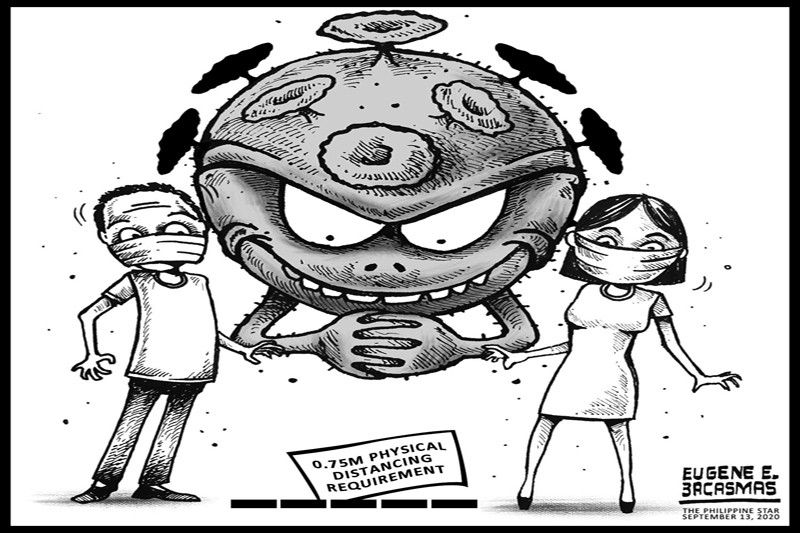EDITORIAL - Wasting the gains

After six months of economically crippling quarantines, the COVID transmission curve is finally flattening, according to experts from the University of the Philippines.
The challenge is to sustain the flattening, which has been attributed to a handful of basic health safety protocols: wearing of face masks in public, with face shields recently added to the requirement; regular hand washing with soap and water, or disinfection with alcohol or sanitizer; and physical distancing of at least one meter.
The distancing requirement has had the greatest adverse impact on mobility and economic activities. Now the government plans to ease the requirement as early as this Monday, Sept. 14, on mass transportation, beginning with railway services. From one meter, the distancing will be reduced to 0.75 meters, further going down to 0.5 and then to 0.3 to optimize limited mass transport facilities, according to the Department of Transportation.
DOTr officials said the move has the support of the National Task Force Against COVID-19 as well as the Inter-Agency Task Force on the Management of Emerging Infectious Diseases. Both the IATF and the national task force may want deeper consultations with health experts on this move.
The Department of Health reportedly wants more discussions on the issue, which public health advocates have warned could put to waste the sacrifices people have made in the past six months.
The one-meter distancing requirement is already the global minimum against coronavirus infection; in other countries, up to two meters is imposed. Distancing habits have been formed in the past six months, and these can be quickly broken once closer proximity is allowed by the government in mass transportation.
After the strictest enhanced community quarantine was lifted, the surge in COVID cases was partly blamed on the resumption of mass transportation. While public transport facilities are essential as the economy is gradually reopened, workers have learned to adjust to the limitations, with many turning to bicycles and motorcycles. There are also many public utility vehicles, including buses and taxis, that are still waiting to be allowed to resume operations.
This plan also runs counter to the efforts of the Department of the Interior and Local Government and the national task force to ban all home quarantine in an effort to prevent household transmission. Before the plan is implemented, there should be extensive consultations with health experts. Reviving the economy is not possible with sick workers. The hard-won gains of the past six months must be preserved and the flattening of the curve must be sustained.
- Latest
- Trending
























